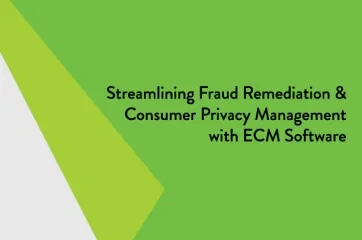What is Commercial Loan Software?
The phrase “commercial loan software” is frequently used by bankers when referring to loan origination systems and document preparation technology. However, commercial loan software encompasses a broader selection of tools that are used to support the commercial lending process.
Examples of Commercial Loan Software
A financial institution could theoretically build its own commercial loan software; however, many banks and credit unions choose to license software from third-party vendors. Traditionally, commercial loan software was installed locally, but recent advancements in cloud technology have led to increased adoption of Software as a Service (SaaS). Pricing for commercial loan software varies based on the functionality and other factors, such as the bank or credit union’s asset size and/or number of users.
Common examples of commercial loan software include:
Loan origination systems (“LOS”): Loan origination systems (or “LOS” for short) simplify the generation of loan documents while helping to ensure regulatory compliance. Instead of manually duplicating templates or hiring a lawyer for each loan, bankers simply enter pertinent information into the LOS. Once submitted, the LOS generates the correct documents with the necessary verbiage. LOS technology can also support other related workflows, such as signature collection via eSign platform integrations.
Commercial loan analysis software: Prior to making a commercial loan, financial institutions need a way to analyze relevant data and ensure prudent decision-making. Commercial loan analysis software helps banks and credit unions “spread” financial data and generate key ratios. Commercial loan analysis software can also be helpful for analyzing updated financial information to ensure ongoing creditworthiness. Some systems even make it possible to plot financial ratios over multi-year periods for trend analysis.
Loan file imaging systems: It’s difficult to analyze customer or member creditworthiness when important data is locked away in hard copy file folders. Loan file imaging systems digitize the experience for users, streamlining access to loan (and, in some cases, credit) documentation. Staff can efficiently find and view documents from their desktop computers instead of waiting for interoffice mail or couriers to deliver paper documents.
Exception tracking and reporting tools: Many banks and credit unions track their exceptions in spreadsheets. Others rely on desktop ticklers or core modules. Regardless of the approach, exception tracking is an essential process for commercial lending. Remembering what to track, from whom, and by when is key for mitigating risk and ensuring positive experiences for customers or members.
Driving Increased Efficiency through an Integrated Approach
Integrating multiple commercial loan software applications is one way to drive additional efficiency. For example, connecting an LOS to a system like AccuAccount can make it possible to organize and store loan documentation with less manual effort.
Some commercial loan products offer overlapping functionality, thereby reducing the need for unnecessary system-to-system integrations. Our AccuAccount solution, for example, offers built-in imaging and exception tracking features, making it possible to clear exceptions as loan documents are scanned into the file.
Continue Reading
Alogent’s Innovation Hub is a great resource for financial institutions. Browse additional banking terminology, download a whitepaper, read our case studies, and much more.














